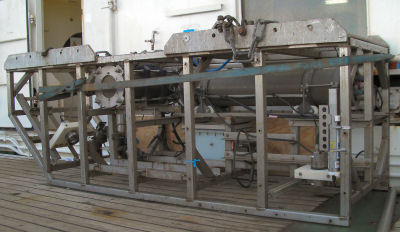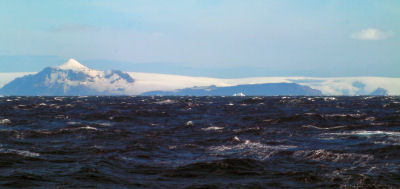Wednesday 19th January
Today's contributor: Jon Copley
Our remotely operated vehicle, Isis, was damaged during launch this morning, and unfortunately can't be repaired during this expedition. But we still have a camera system aboard for surveying the ocean floor, and other equipment for collecting samples. We used those systems to find and investigate deep-sea vents during the first expedition of this project in 2009, and will now use them again in our back-up plan.

SHRIMP - Seabed High Resolution Imaging Platform
In the afternoon, we tried to recover one of Adrian's landers that carries a whalebone colonisation experiment. After moving to the location where the lander was left on the seafloor a year ago, we transmitted the acoustic command for it to release its ballast, allowing the lander to float back to the surface for collection.
More than a dozen pairs of eyes scanned every direction from the bridge for several hours, looking for a red-coloured lander bobbing in the swell. But despite the ship following a widening search pattern, we did not see it before dusk fell. Either the release did not fire, or the lander was carried away from our area by the seas.

King George Island
Neptune sometimes exacts a heavy toll for access to his realm. But it's not when things are going well that you realise how good a team is - it's when things become challenging. Despite today's setbacks, morale aboard remains positive, and we are keen to continue answering the scientific questions that brought us here.
